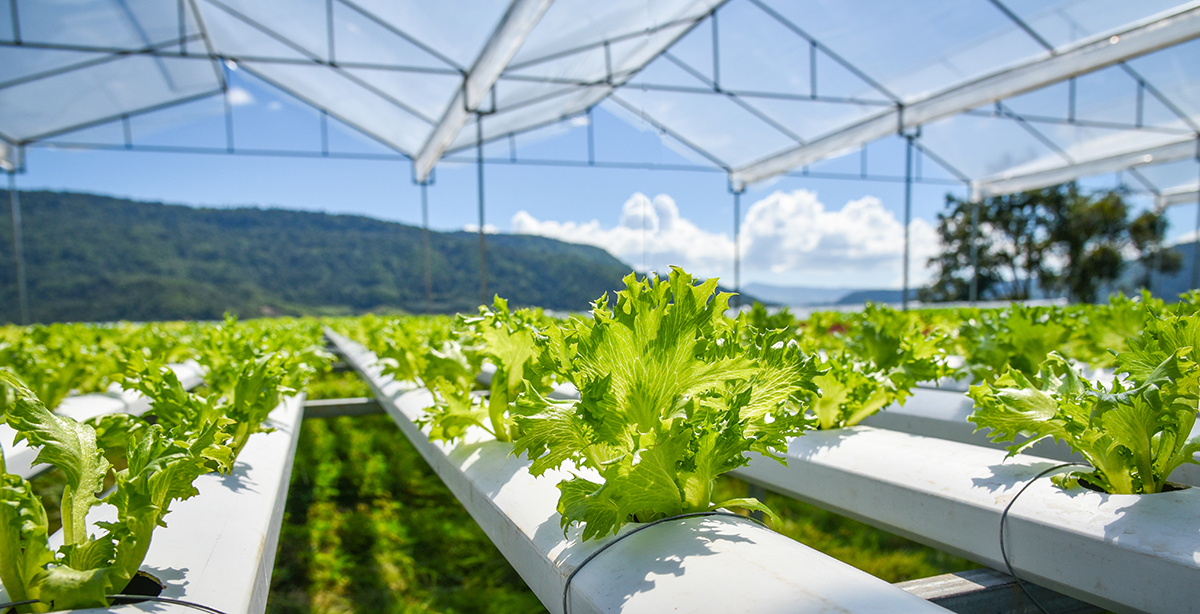What is Hydroponics and How Does it Work?

Hydroponics is a type of gardening that eliminates the need for soil, instead utilizing a nutrient-rich water solution to grow plants.
Many people have embraced this high-tech approach to growing crops, and with good reason. Hydroponics offers many benefits, including greater efficiency, reduced water use, and improved crop quality. This article will provide an overview of hydroponics and explain why it’s becoming an increasingly popular choice for many gardeners.
What Is Hydroponics and How Does It Work?
An Introduction Into the Wonderful World of Hydroponics

Hydroponics is a method of growing plants without the use of soil. Instead, plants are grown in nutrient-rich water in which the right nutrition is supplied directly to the roots. The plants’ roots are placed in trays or containers filled with nutrient-rich water, and the water is constantly circulated through the system in order to ensure the plants’ roots are provided with the nutrients they need.
At the same time, oxygen is also delivered to the roots. This is essential for healthy plant growth and is accomplished by either bubbling oxygen through the nutrient solution or placing a fan near the root zone.
The most common types of hydroponics are Deep Water Culture (DWC), Passive Sub-Irrigation Systems (PSI), and Aeroponics. DWC involves suspending the roots directly in the nutrient solution, so the roots are always submerged in water which is continually circulated and oxygenated. PSI is similar, but the plants’ roots are instead supported in water-permeable baskets so they can draw in nutrient-rich water as needed. Last, aeroponics involves spraying nutrient-rich water onto the plant’s roots, but with much finer droplets in comparison to traditional sprayers.
How Does Hydroponics Work
Hydroponics is a method of growing plants in water with no soil. It is becoming increasingly popular among hobbyists and commercial farmers alike because it uses less water, eliminates weeds and soil-borne diseases, and is more efficient with inputs like fertilizer and space. But what is the science behind what is hydroponics and how does it work?
At its roots, hydroponics relies on the same mechanisms of growth as traditional soil-based farming; namely, sunlight, air, and nutrients. The difference lies in how these elements interact with the plant. In soil, these elements mix to create a medium for the plant’s roots to take up nutrients. In hydroponics, the nutrients are mixed directly with the water and the plant takes them up from there.
pH and Temperature Control
First and foremost, the hydroponic system must provide the appropriate pH and temperature for the plants. The ideal pH level for most plants is 6.0-7.0, and that can be achieved with a mixture of water and additives. The temperature should also be monitored, as some plants require a slightly warmer environment than others do. It’s important that the entire system is stable and consistent in order to maximize growth.
Nutrient Medium and Solutions
When it comes to the nutrient mix, there are two options. The simplest is to use a nutrient solution, which is a mix of necessary trace elements and minerals, such as nitrogen, phosphorus, and potassium, that are specifically tailored to the type of plants being grown. The other option is to use an inert medium like gravel or clay pellets, which act as anchors for the plants’ roots and also provide a dissolvable nutrient supply.
Proper Aeration
Lighting
Light is the last critical aspect of hydroponics and is important for plants’ growth. Most often, fluorescent or LED grow lamps are used, although in some cases natural light can be used as well. All plants require different amounts of light and need to be on a schedule that maximizes the use of the available light source.
Water / Hydration
Finally, it’s important to also think of water. Hydroponically grown plants need to be watered frequently and with careful attention to the proper water-nutrient balance. Plants can be watered manually or with an automated drip irrigation system. Automation, while not necessary, can help to save water and avoid over-watering.
The Many Advantages of Hydroponics
Hydroponics Advantages
Greater Efficiency
Reduced Water Use
Improved Plant Quality
In addition to being a highly water-efficient method of growing crops, hydroponics is also renowned for producing higher yields of top-quality produce.
This is largely due to the fact that hydroponic systems provide an ideal growing environment in which plants’ roots are constantly supplied with the right amount of oxygen, nutrients, and other essential factors.
Hydroponics: the future of agriculture?
Hydroponics is becoming an increasingly popular choice for those wishing to grow their own produce. It requires careful attention to the right mix of air, light, water, and nutrients and can be challenging for the home gardener. With a little bit of research and know-how, however, it can be an incredibly rewarding way of growing greenery in any space, from a small balcony to an expansive indoor garden.
Its many benefits, including greater efficiency, reduced water use, and improved crop quality, make it an attractive alternative to traditional soil-based gardening. With continued advances in hydroponic technology, this approach to gardening is only expected to become more popular in the future.








